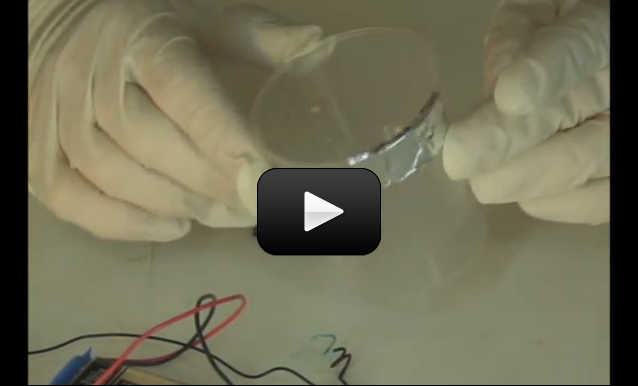In this lab, we’re going to investigate the wonders of electrochemistry. Electrochemistry became a new branch of chemistry in 1832, founded by Michael Faraday. Michael Faraday is considered the “father of electrochemistry”. The knowledge gained from his work has filtered down to this lab. YOU will be like Michael Faraday. I imagined he would have been overjoyed to do this lab and see the results. You are soooo lucky to be able to take an active part in this experiment. Here’s what you’re going to do…
You will be “creating” metallic copper from a solution of copper sulfate and water, and depositing it on a negative electrode. Copper is one of our more interesting elements. Copper is a metal, and element 29 on your periodic table. It conducts heat and electricity very well.
Many things around you are made of copper. Copper wire is used in electrical wiring. It has been used for centuries in the form of pipes to distribute water and other fluids in homes and in industry. The Statue of Liberty is a wonderful example of how beautiful 180,000 pounds of copper can be. Yes, it is made of copper, and no, it doesn’t look like a penny…..on the surface. The green color is copper oxide, which forms on the surface of copper exposed to air and water. The oxide is formed on the surface and does not attack the bulk of the copper. You could say that copper oxide protects the copper.
Please login or register to read the rest of this content.


From my chemistry expert: “A carbon rod like used for drawing or in a search light would be compressed amorphous carbon, possibly held with some binder. There would be small crystalline regions with some graphite but amorphous forms mainly have “no long range structure”. You can look up allotropes of carbon on wikipedia for a summary of the various forms.”
what allotrope of carbon is in the carbon rod?
What was your solution made up of, and how many volts did you put through the system?
We tried this experiment but instead of plating the carbon rod in copper, the wire wrapped around the carbon rod got covered in carbon. What do you think happened?
Thanks,
Alex Larson, 10
We here at Supercharged Science find that learning is not segmented depending on age/grade, but rather dependent on a child’s experience and interest, as well as the parent’s goals. Thus this program supports this type of learning. So… on that note, if they seem thirsty for more info about balancing chemistry equations to better understand what’s going on, by all means indulge them! Your own goals for your child’s science learning combined with your schooling philosophy will determine what is right for you. (But yes, normally chemistry on that level is reserved for high school. However, many kids are more than ready for it at an earlier level.)
Aurora,
I love that you included the chemical computations in this. My kids are 11 and 12. Should I be making sure they understand the chemical equations that explain this, or is that highschool level?
Kim
Yes, that happens when your account expires. You can still log in, but no longer access the information on the site. You can log into your account and click the Membership button to reactivate it, or contact us directly.
it has no movies it says
You must upgrade to view this content. Please go to your Members Page.
That is cool how we can make copper, and it is as simple as that!
Holly Thomson, 12